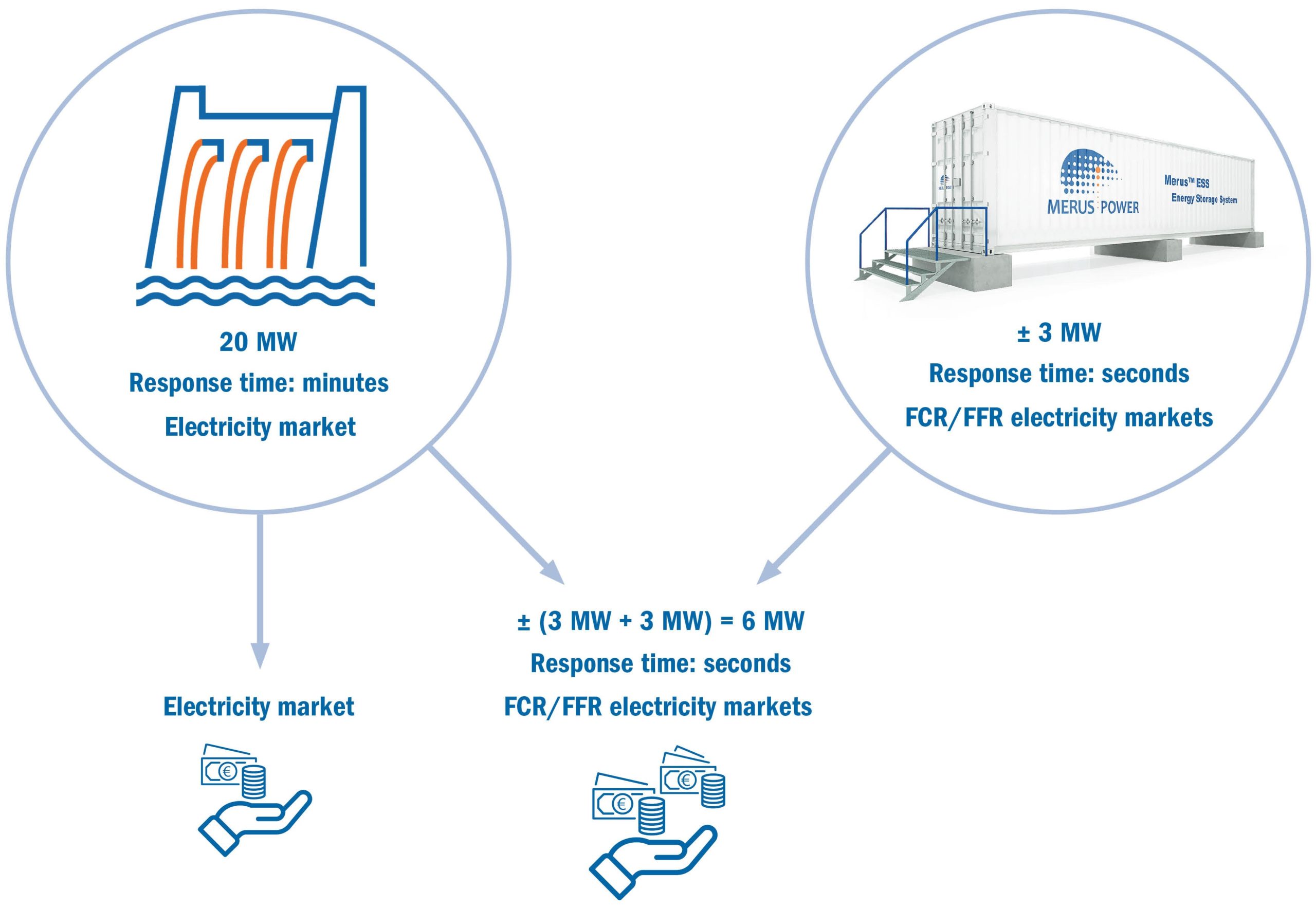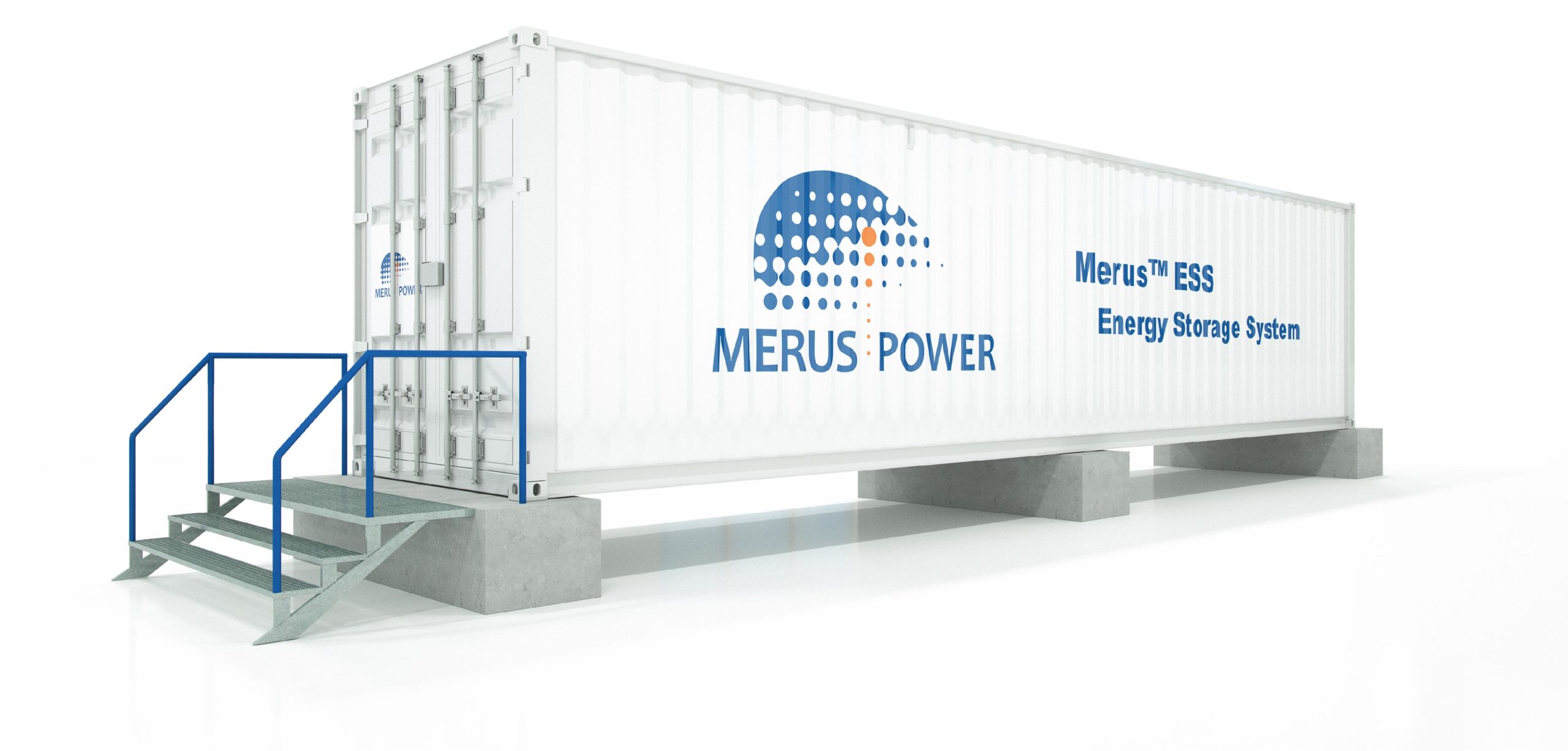
The various benefits of Merus™ ESS Energy Storage in hydropower production
Megatrends contribute to the growing need for CO2-free energy in our society, industries, organizations, and transportation. In addition to solar and wind power, hydropower as an emission-free source of renewable energy provides efficient electricity generation throughout the year, around the world, in all weather conditions. This makes hydropower a very efficient way to produce energy. However, like solar and wind power, also hydropower needs the support of battery energy storage for flexible electricity production.
The demand and supply of electricity production requires reactive hydropower operations
The electricity market operators plan their consumption and production in advance, but in reality, there is a deviation within each hour. Balancing the market ensures, that electricity production equals consumption at all times. The deviation between production and consumption can be observed from the frequency of the electricity grid. This deviation is balanced with frequency containment reserve services. Increased renewable energy also increases the required capacity of grid support services. Transmission system operators encourage the operation on the frequency containment reserve market by direct income for example.
The combined operation of a hydropower plant with a sophisticated Merus™ Energy Storage System enables the hydropower plant’s operation on the frequency containment reserve market. Depending on the dynamics and controllability of the turbine, the capacity of the frequency containment reserve sold to the market can be twice the power capacity of the energy storage system. Furthermore, the number of hydro turbine movements has reduced by 90% and the distance of movements by more than 50 %. These movements are related to material stress cycles, turbine blades fatigue and wear on the runner blade bearings. In other words, the demand and supply of electricity, as well as frequency containment reserve market requires flexible hydropower operations, but the massive turbines and guide vanes need fast-reacting support from energy storage.
Merus™ Energy Storage System can operate on the frequency containment reserve market on its own, but combined operation with a hydropower plant increases the income even more. Depending on the type of the hydro turbine and its control mechanics, the hydropower plant may or may not be able to operate on the frequency containment reserve market on its own, but our battery energy storage can bridge the hydropower plant to the frequency containment reserve market. A combined operation with Merus™ ESS increases the revenue of existing hydropower assets and reduces wear and tear on the mechanical parts and thus eliminates the risk of premature failure of critical components.

The benefits of our Merus™ ESS Energy Storage System in hydropower production
- Significant reduction in mechanical hydropower control (Turbine and guide vanes)
- Wear and tear are significantly reduced
- The number of adjustments can be reduced by more than 80% and the size of the adjustment movements by more than 50%
- Operating and maintenance costs are significantly reduced
- The lifespan of a hydropower plant can be doubled, e.g. from 20 to 40 years
- Participation in the frequency containment reserve market and additional income (FCR, FFR)
- The potential of hydropower for larger power adjustments, combined with Merus™ ESS Energy Storage with rapid change capacity, provides an opportunity for ever-higher returns from the frequency containment reserve markets.
- Opportunity to participate in the frequency containment reserve market with new, more stringent ENTSO-E regulations

Book a Merus™ ESS Energy Storage presentation for your company, where you get to know the many possibilities of our energy storage system. We focus on the use and application that interests your company the most. Our products are modular and easy to scale for very different needs.